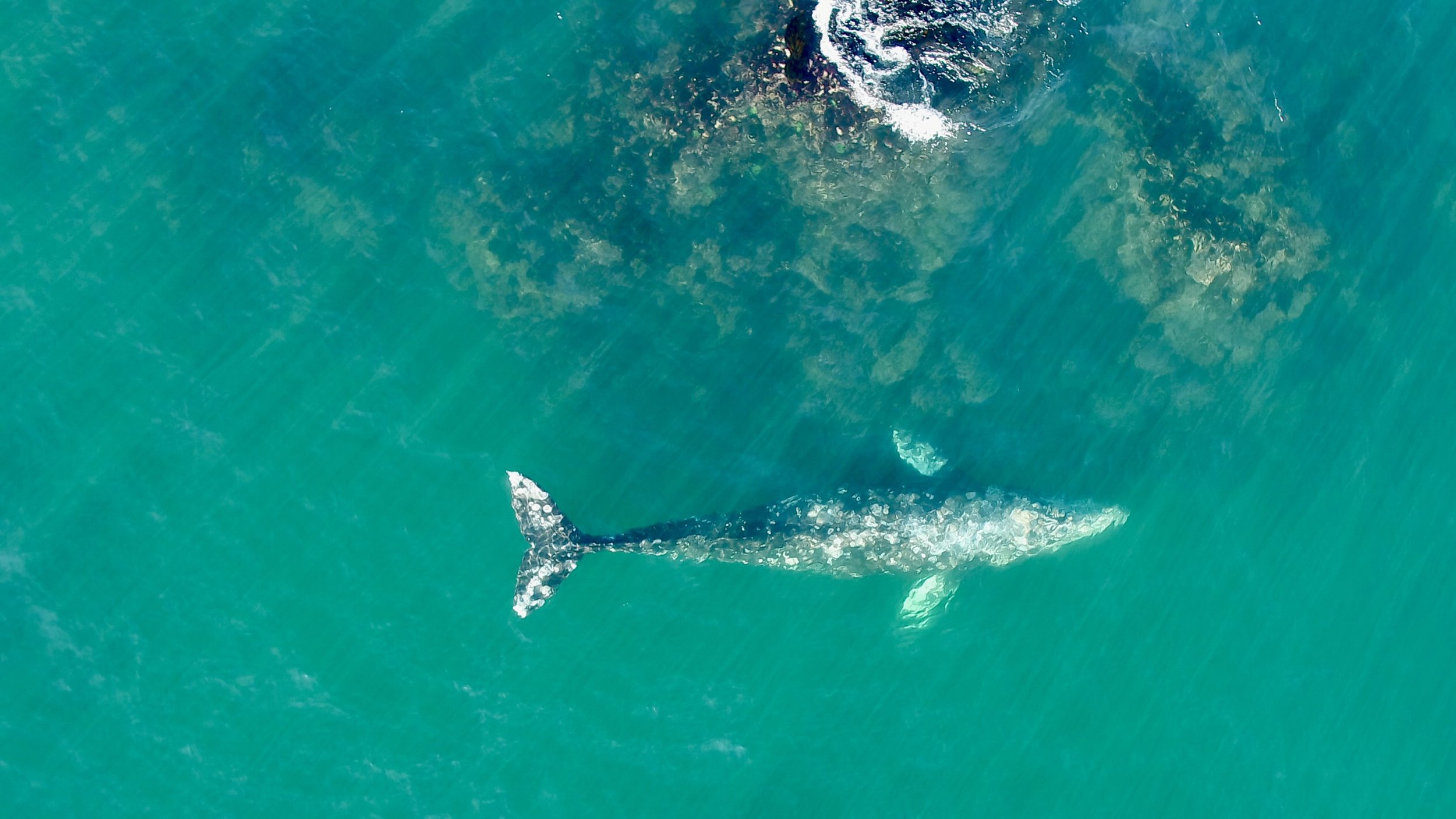New Research Shows that Gray Whales in the Pacific Coast Feeding Group Have Become Smaller Than the Rest of Their Pacific Counterparts
Written by Alex Baumhardt
Originally published by Oregon Capital Chronicle
A gray whale off of the Oregon coast (Photo: Geospatial Ecology of Marine Megafauna Laboratory / Oregon State University)
Gray whales that have confounded scientists by stopping their summer migration short to feed off the Oregon coast might be adapting to shallow waters
Every summer, as thousands of eastern North Pacific gray whales journey 12,000 miles from birthing grounds in Mexico to feeding grounds in the Arctic, a small group peels off to dine along the Oregon Coast.
The group of just over 200, called the Pacific Coast Feeding Group, or Oregon’s “summer residents,” represents about 1% of the roughly 16,000 whales that typically make the journey north each year. Scientists studying them still don’t know why this group stops along the coast between northern California and British Columbia, or how long they’ve done so.
But new research from Oregon State University shows that the summer residents, while genetically identical to their peers who venture all the way to the Arctic, have developed shorter bodies and smaller skulls and tails than other eastern North Pacific gray whales.
The findings suggest the summer residents have been adapting to feed in the shallow and rocky kelp beds off the coasts of northern California, Oregon, Washington and British Columbia. It’s also possible they are smaller due to stress from human activities near the coasts. The Oregon State scientists published their findings Aug. 9 in the journal Biology Letters.
Healthy or hungry?
Scientists at Oregon State University have tracked the summer residents since about 2009. Since 2016, they’ve taken aerial photos to assess the whales’ body conditions and collected fecal samples to analyze their diet and measure hormones indicative of reproductive health.
To determine the differences in size between the Oregon residents and their peers, the scientists compared that data to data gathered from photos and historical records of eastern North Pacific gray whales collected since the 1950s.
The scientists found that summer resident females are about 3 feet shorter and the males about 1.5 feet shorter than their counterparts that make the full migration to the Arctic. A typical eastern North Pacific gray whale is about 45 feet long, with females coming in slightly larger than males.
K.C. Bierlich, a postdoctoral scholar at Oregon State and coauthor of the study, characterized it as a “significant” size difference in a news release.
“That raises some interesting questions: Is this size difference normal for this group of whales and they are a healthy population, but just differently shaped?” he said. “Or is this difference a sign that they are stressed, unhealthy or not getting enough to eat?”
The summer residents’ smaller bodies, heads and tails would be helpful for foraging in coastal kelp beds about 35 feet deep, while the eastern North Pacific gray whales that feed at depths four times that in the Arctic need bigger bodies and more fat to withstand the colder temperatures, the scientists theorized.
Although the summer resident whales are smaller, they grow at the same rates as the other Eastern North Pacific gray whales, the scientists found.
But scientists also expressed concern that the smaller size of the summer residents could indicate that they have less energy stored for reproduction or for rebounding from injuries. Because they feed close to shore, the whales could be stressed by fishing entanglements, boats, ocean noise and pollutants from coastal cities that are stunting their growth.
“More research is needed to understand what may be driving the size differences between the two populations,” said Leigh Torres, an associate professor at Oregon State and coauthor of the latest study.
Mysterious arrival
Scientists still don’t know exactly when or how the group formed. The group has been documented off the Oregon Coast as far back as the 1970s, and eastern North Pacific gray whales have been reported foraging off the coast of the Pacific Northwest since the 1920s.
DNA suggests summer residents share a matrilineal history of returning to the feeding grounds off the coast of Northern California to British Columbia and that calves follow their mothers there, rather than being recruited into the group.
Scientists hypothesize that the summer resident group has come and gone and then come back again as a result of commercial whaling and climactic events.
The overall population of astern North Pacific gray whales has dropped by 46% in the last seven years, but there are signs the population is rebounding. National Oceanic and Atmospheric Administration scientists in Baja, Mexico found that gray whales in area lagoons are larger and healthier this year than in years prior. And for the first time in five years, the number of mothers with calves has increased.

